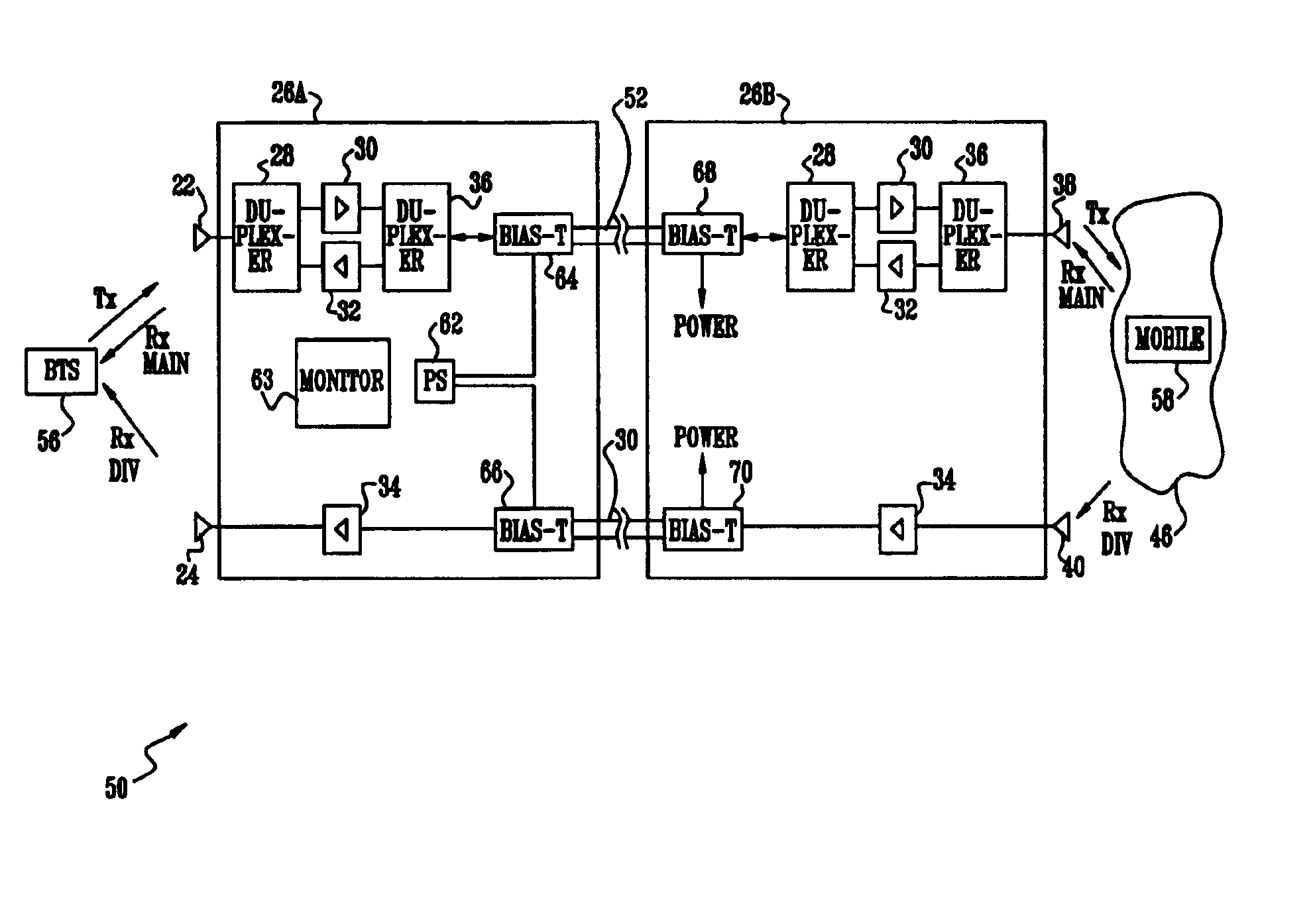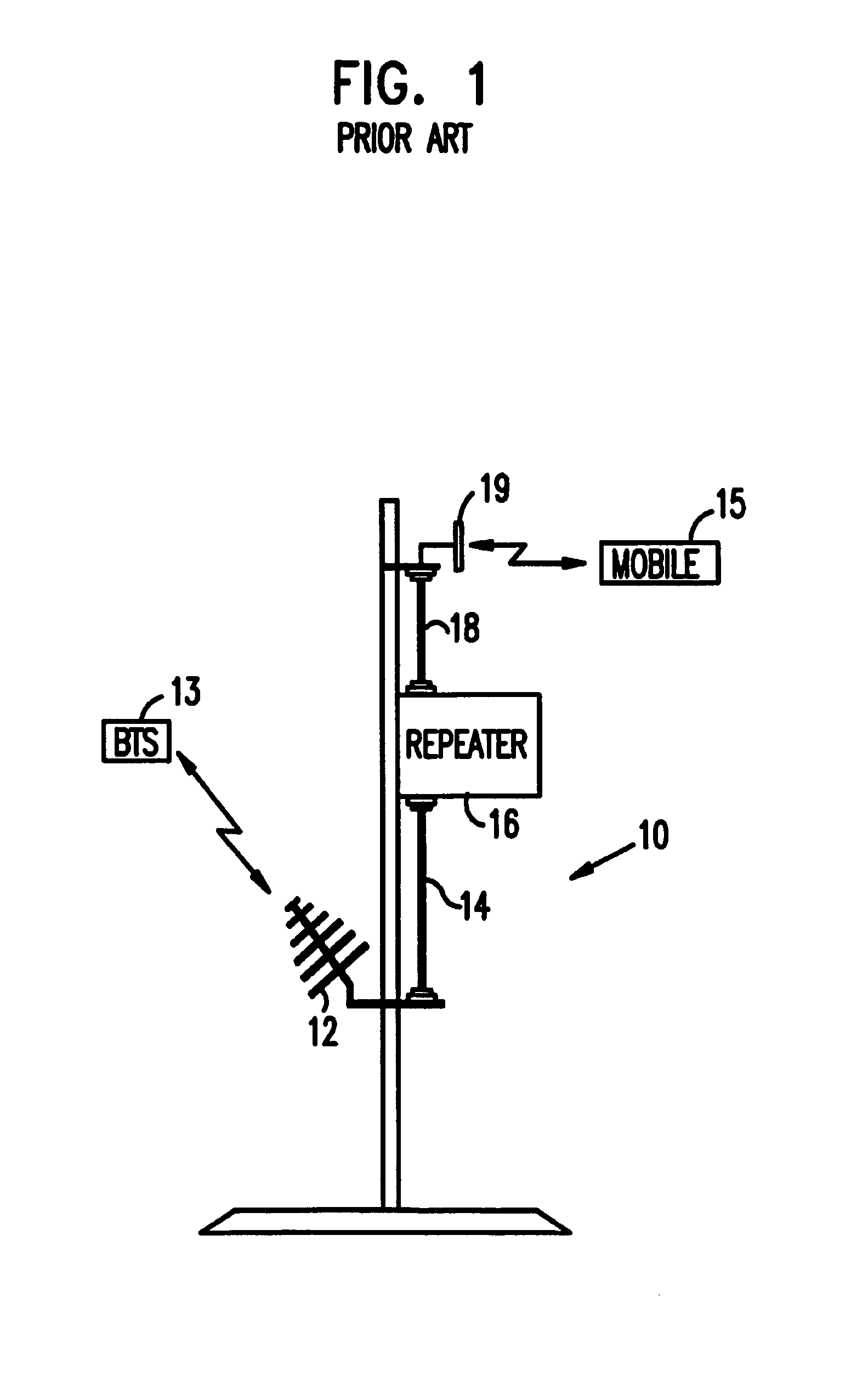Repeater with diversity transmission
a technology of transmission frequency and transmission frequency, applied in the direction of radio transmission, active radio relay system, electrical apparatus, etc., can solve the problem that and the power of the received signal is typically larg
- Summary
- Abstract
- Description
- Claims
- Application Information
AI Technical Summary
Benefits of technology
Problems solved by technology
Method used
Image
Examples
Embodiment Construction
Reference is now made to FIG. 2, which schematically illustrates a combined main / diversity repeater 26, according to a preferred embodiment of the present invention. Repeater 26 operates in a cellular communications network 31, and is implemented so as transfer signals between a region 27, wherein the repeater is located, and a region 46 remote from region 27. Repeater 26 is also implemented so as to transfer signals between itself and a base-station transceiver system (BTS) 44 remote from the repeater. Network 29 preferably operates according to a code division multiple access (CDMA) protocol, and in the description below network 29 is assumed, by way of example, to operate as a CDMA personal communication systems (PCS) network in a band from approximately 1850 MHz-1990 MHz. It will be understood, however, that the principles of the present invention apply to cellular communications networks operating under other protocols and / or in other frequency bands.
Repeater 26 comprises an an...
PUM
 Login to View More
Login to View More Abstract
Description
Claims
Application Information
 Login to View More
Login to View More - R&D
- Intellectual Property
- Life Sciences
- Materials
- Tech Scout
- Unparalleled Data Quality
- Higher Quality Content
- 60% Fewer Hallucinations
Browse by: Latest US Patents, China's latest patents, Technical Efficacy Thesaurus, Application Domain, Technology Topic, Popular Technical Reports.
© 2025 PatSnap. All rights reserved.Legal|Privacy policy|Modern Slavery Act Transparency Statement|Sitemap|About US| Contact US: help@patsnap.com



